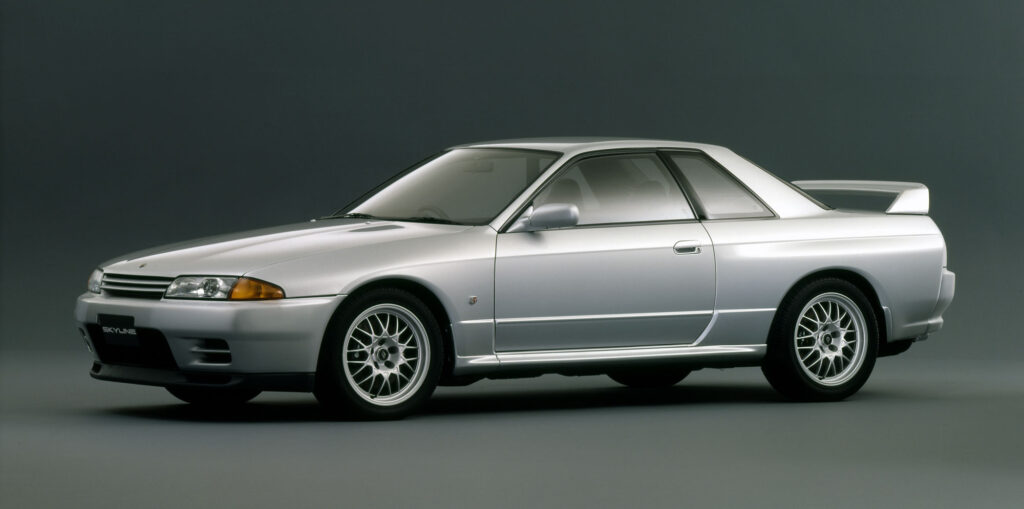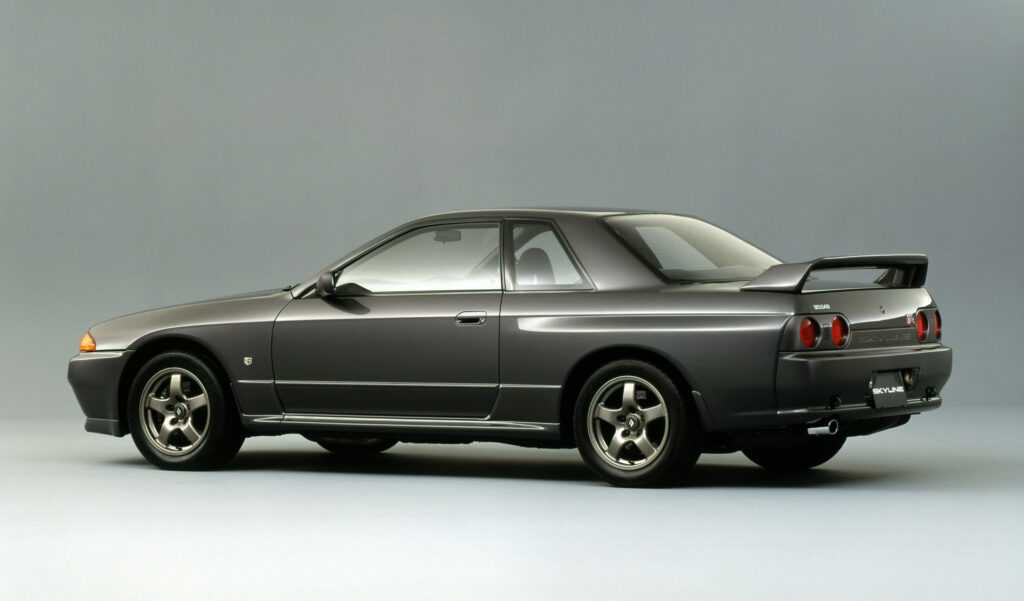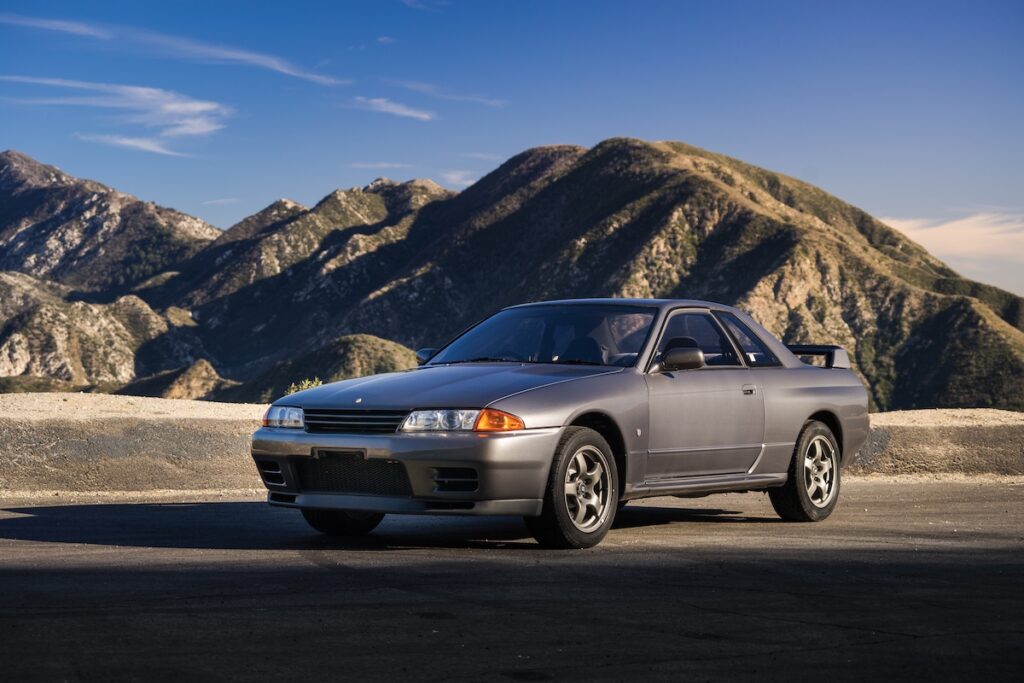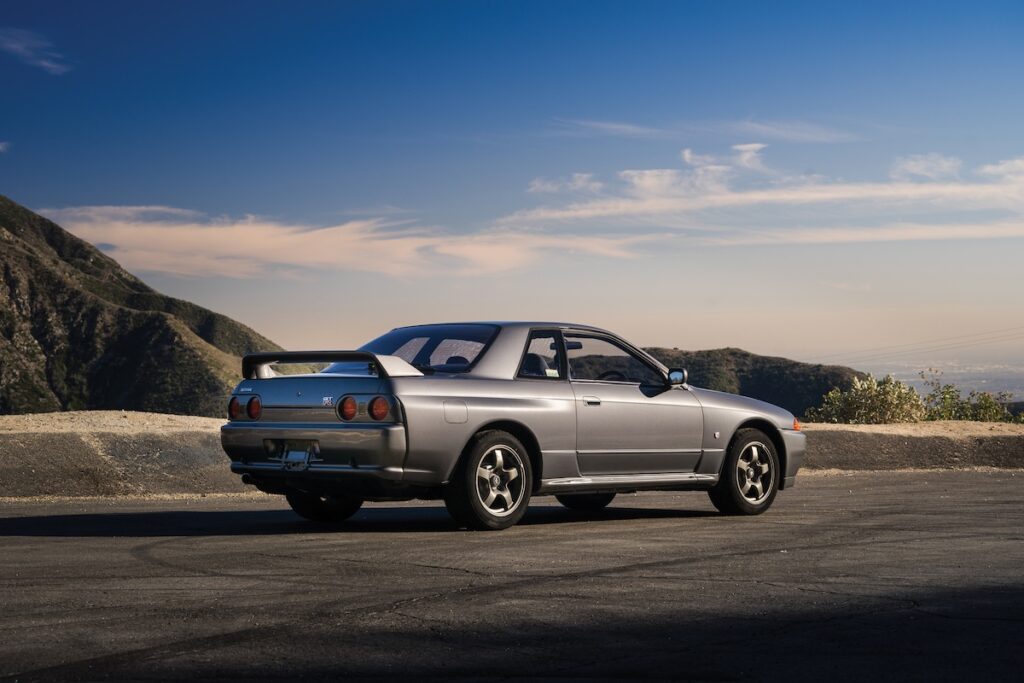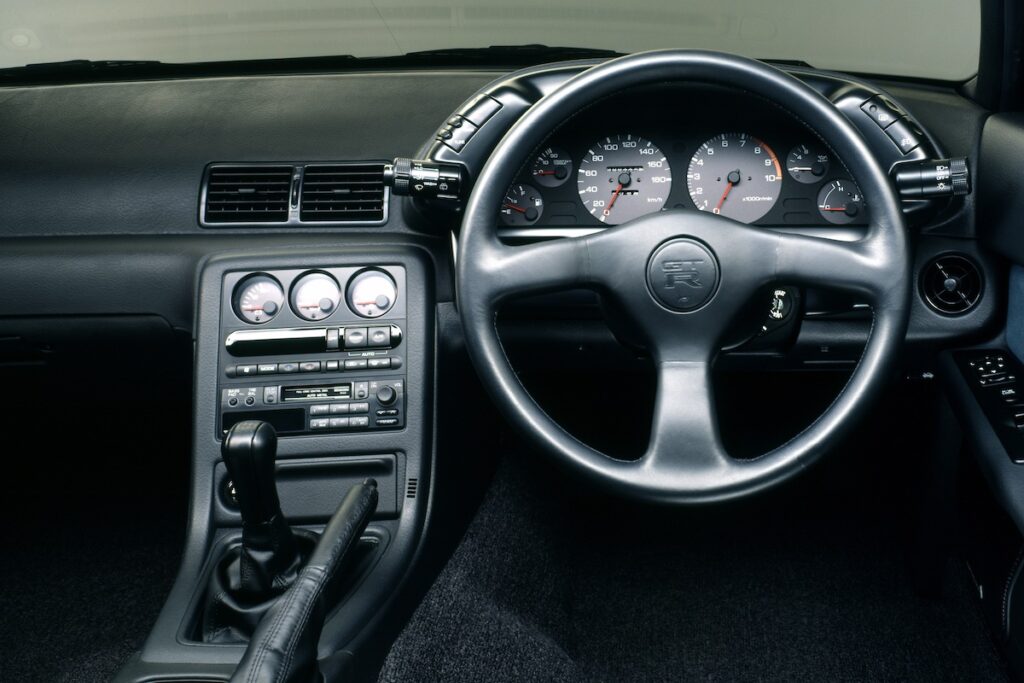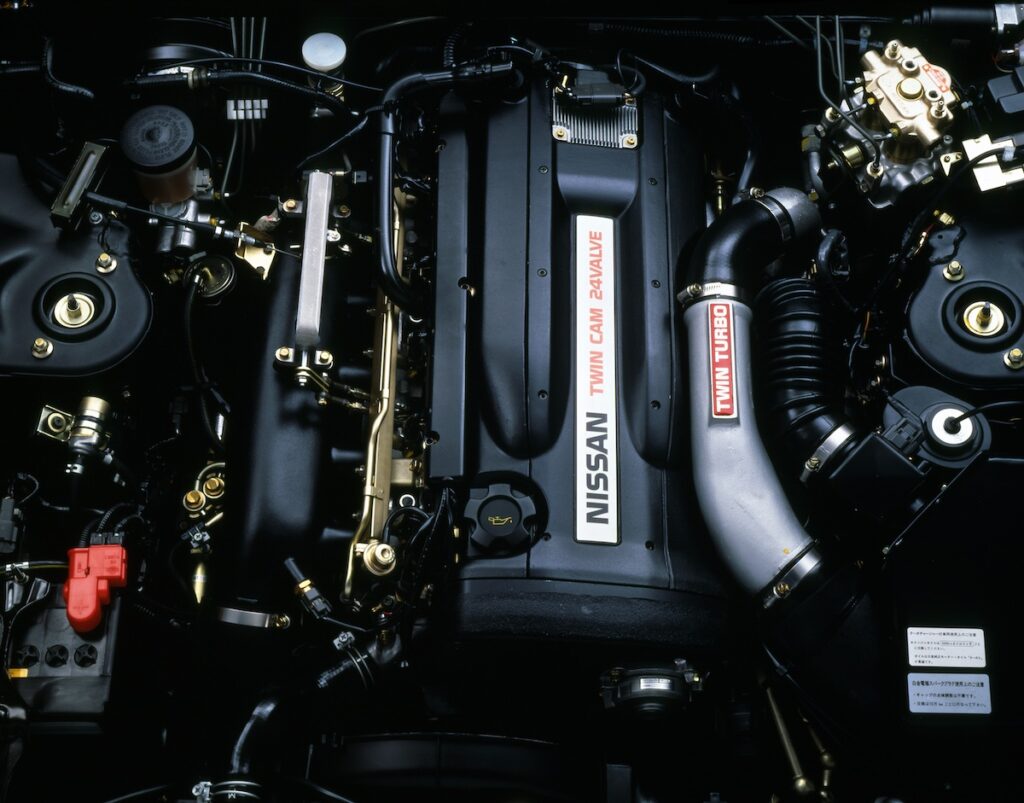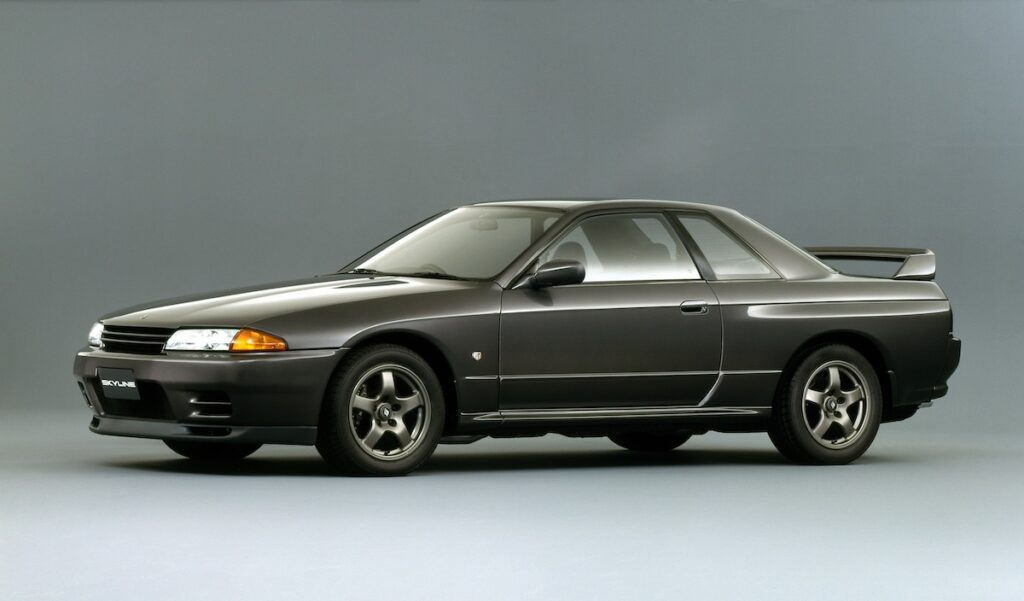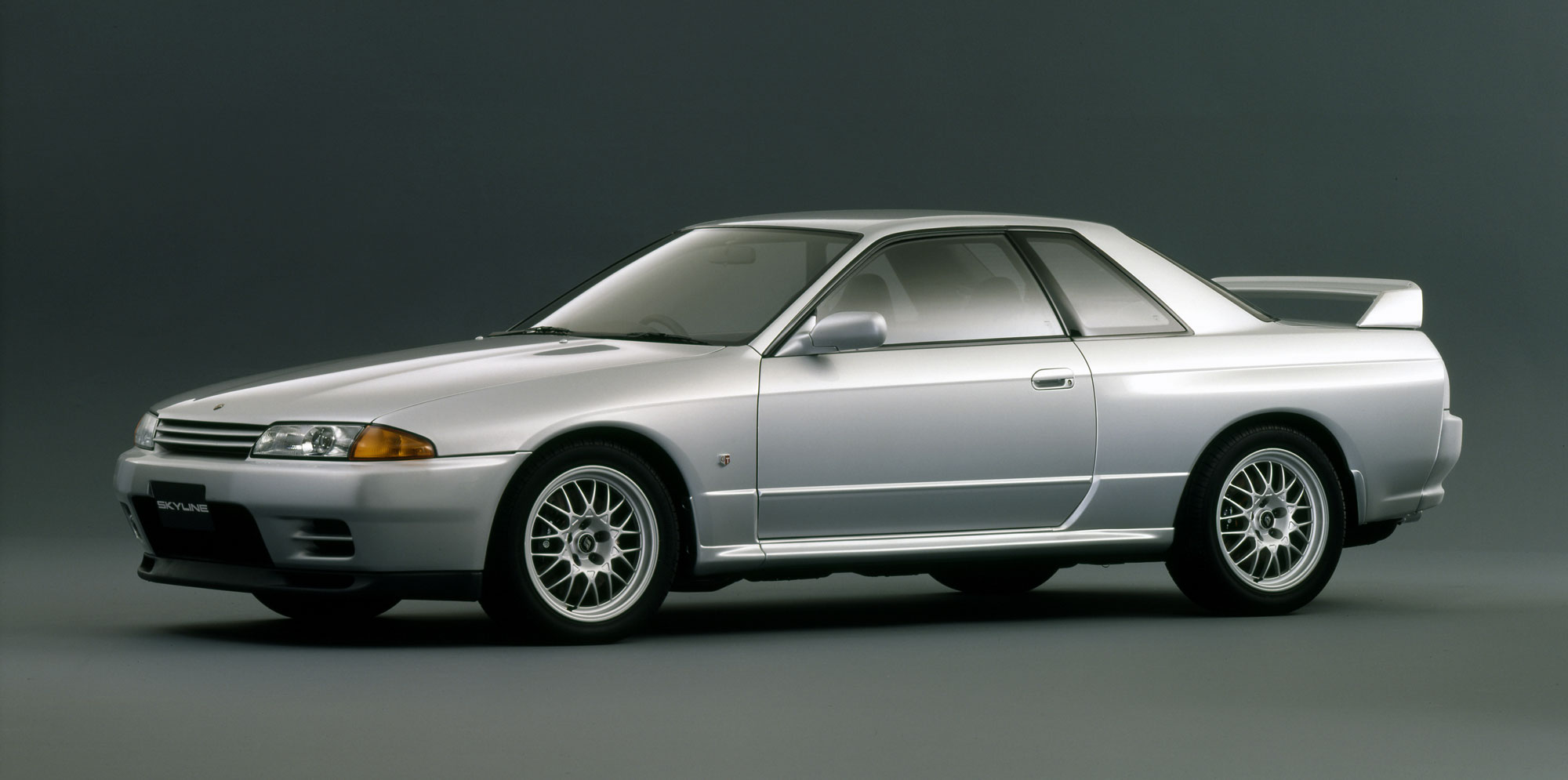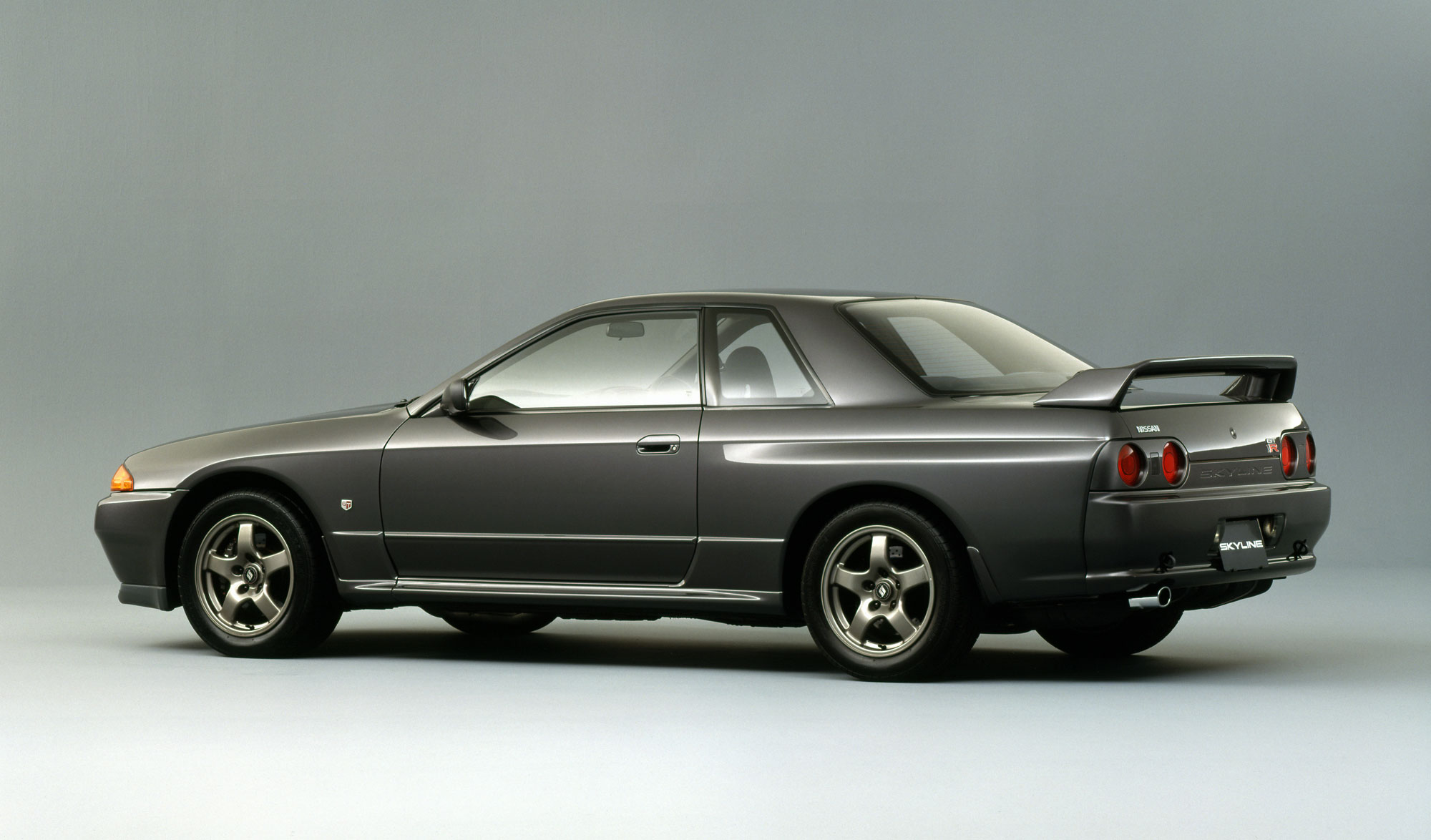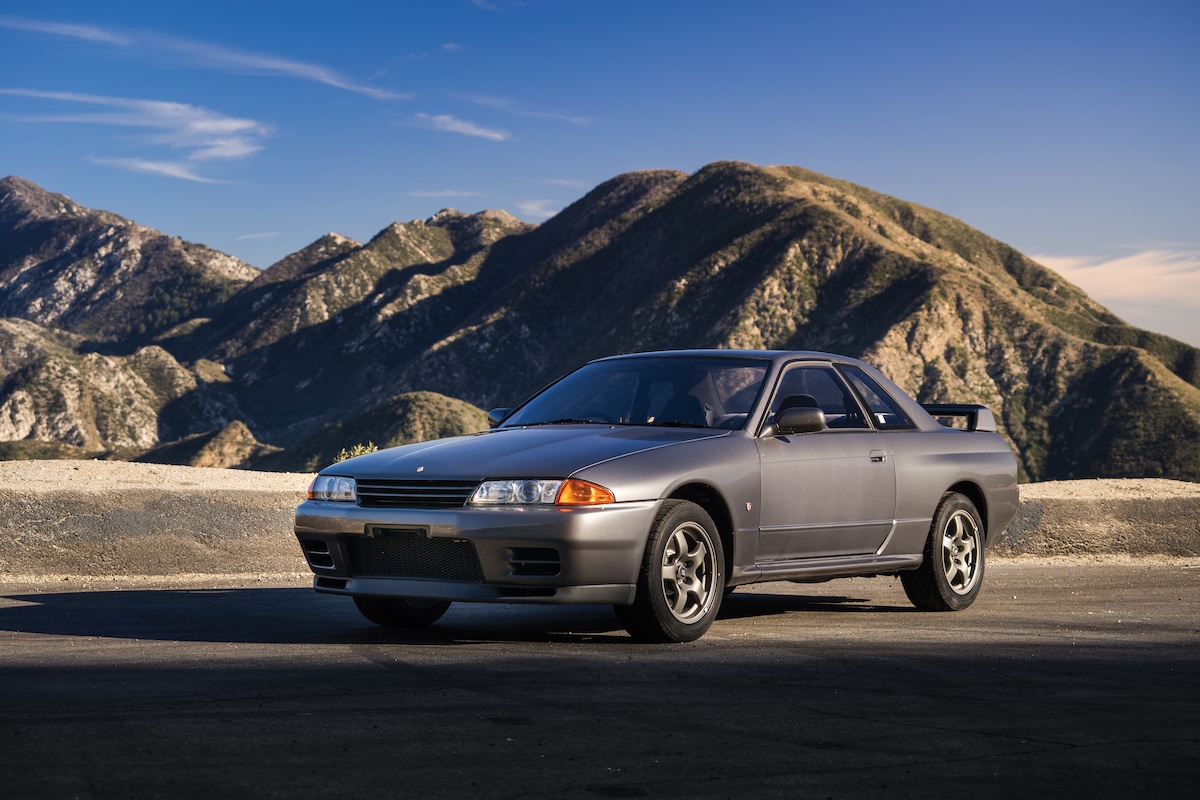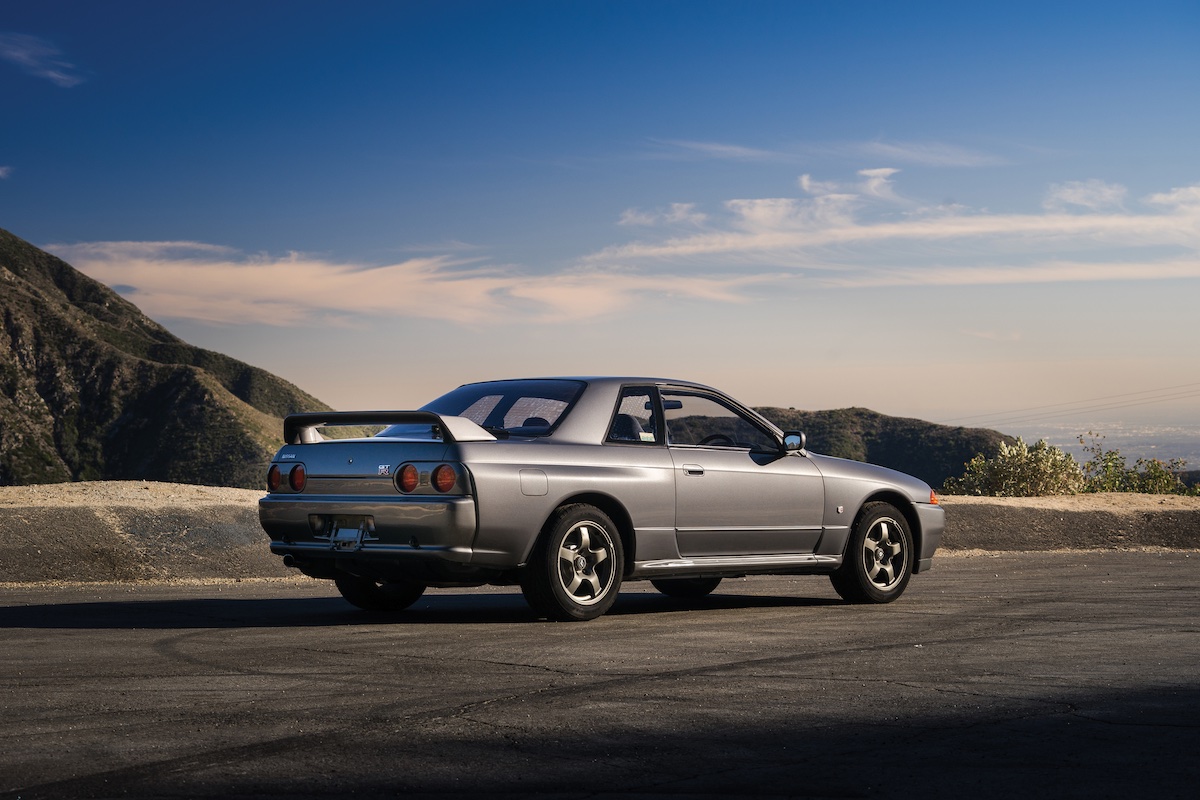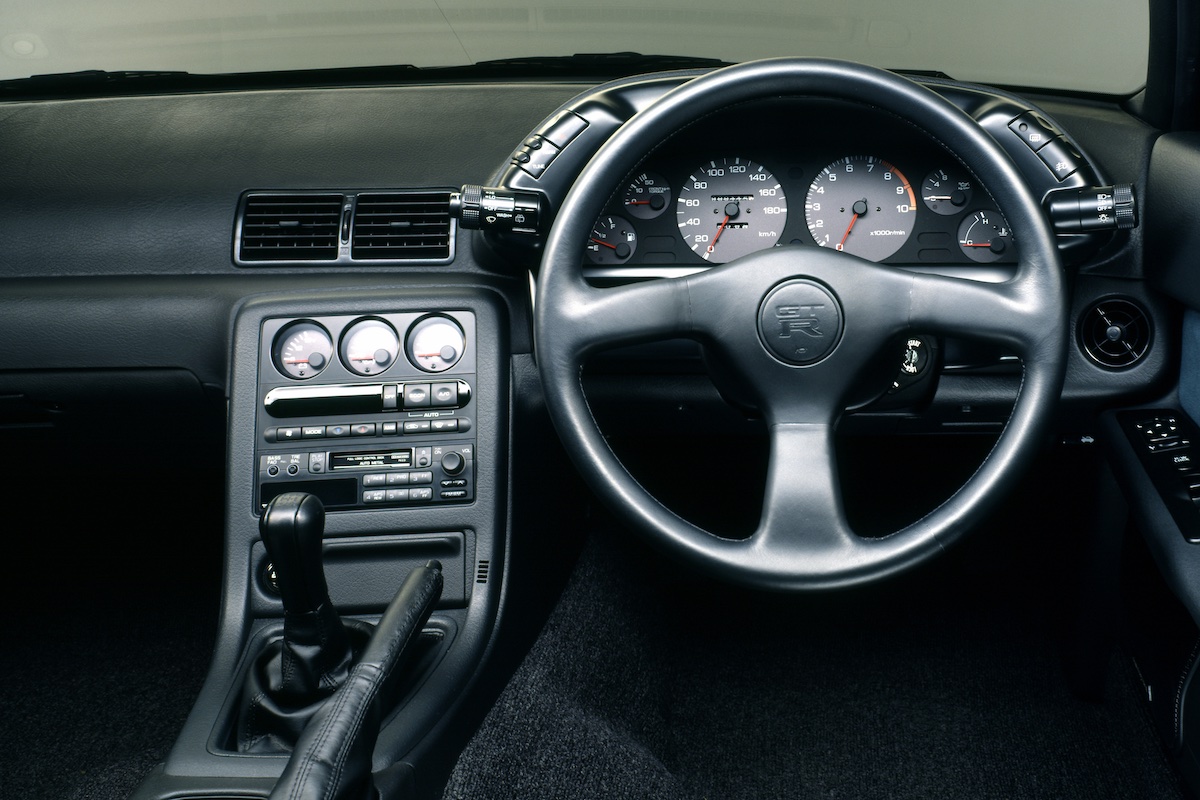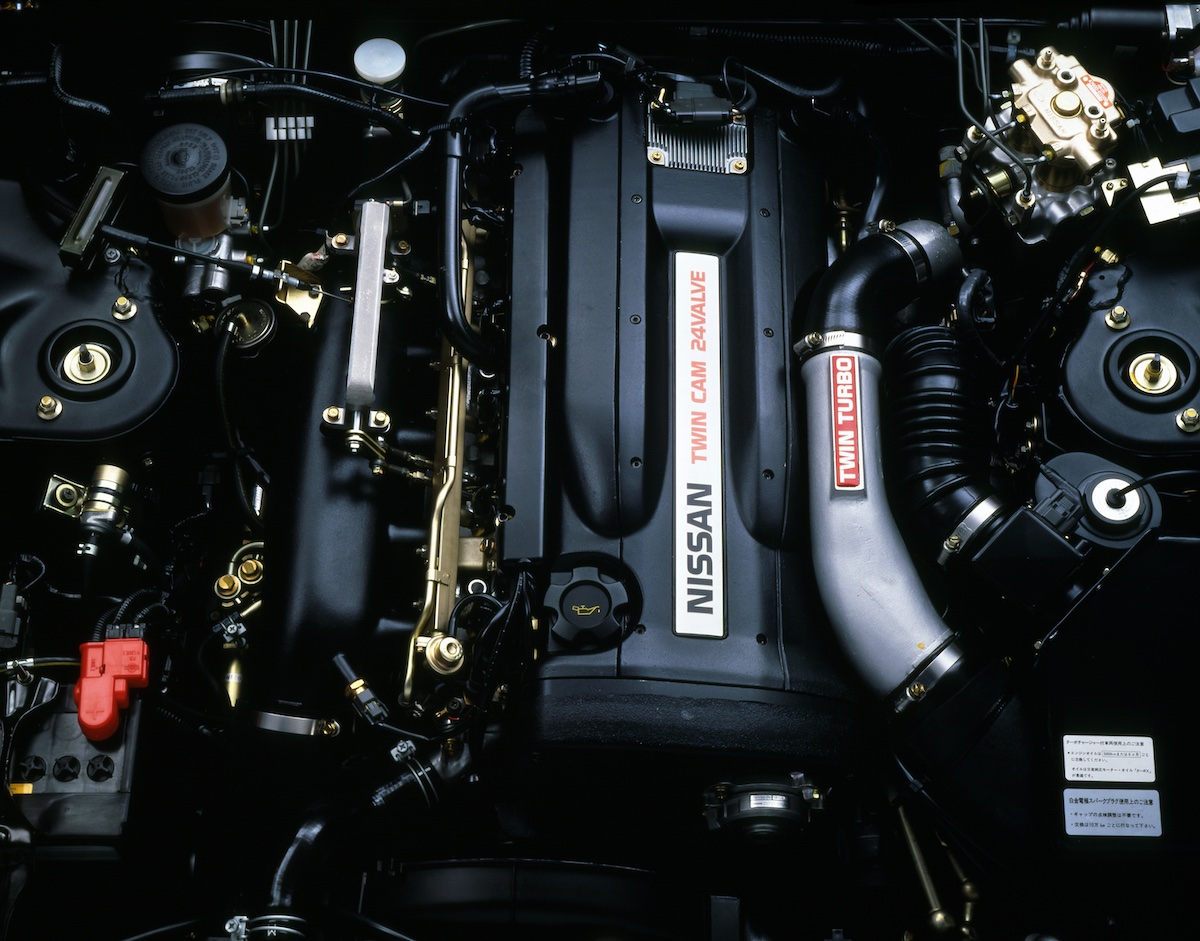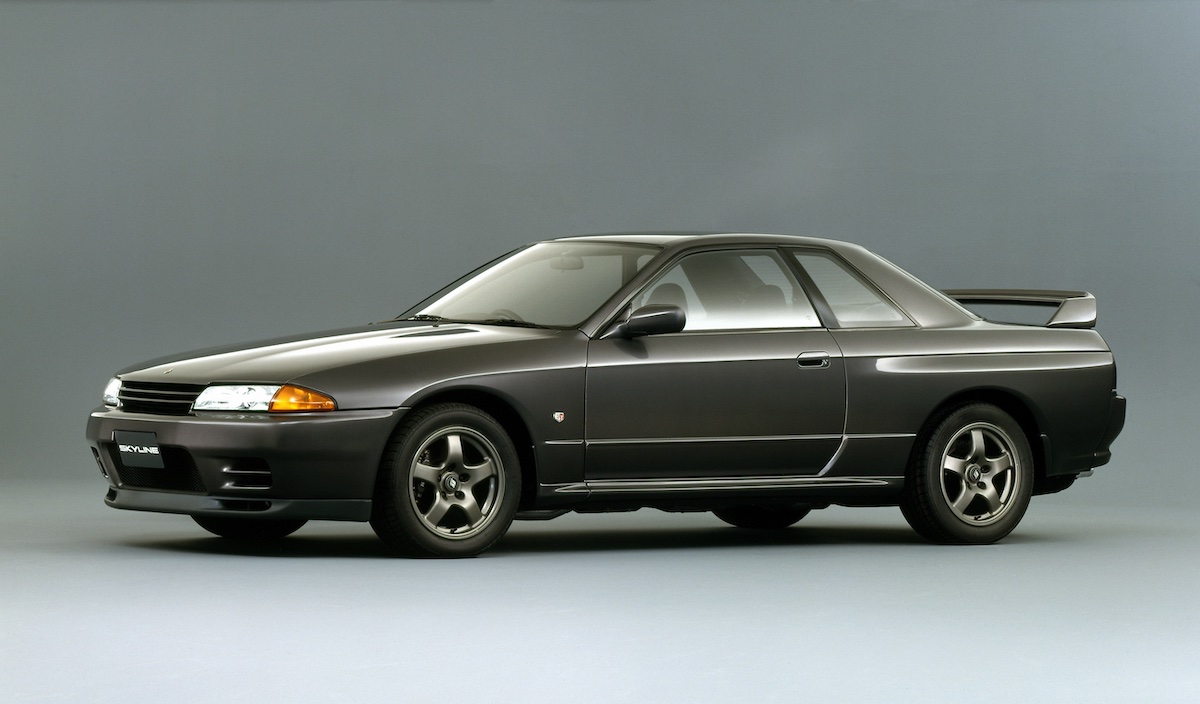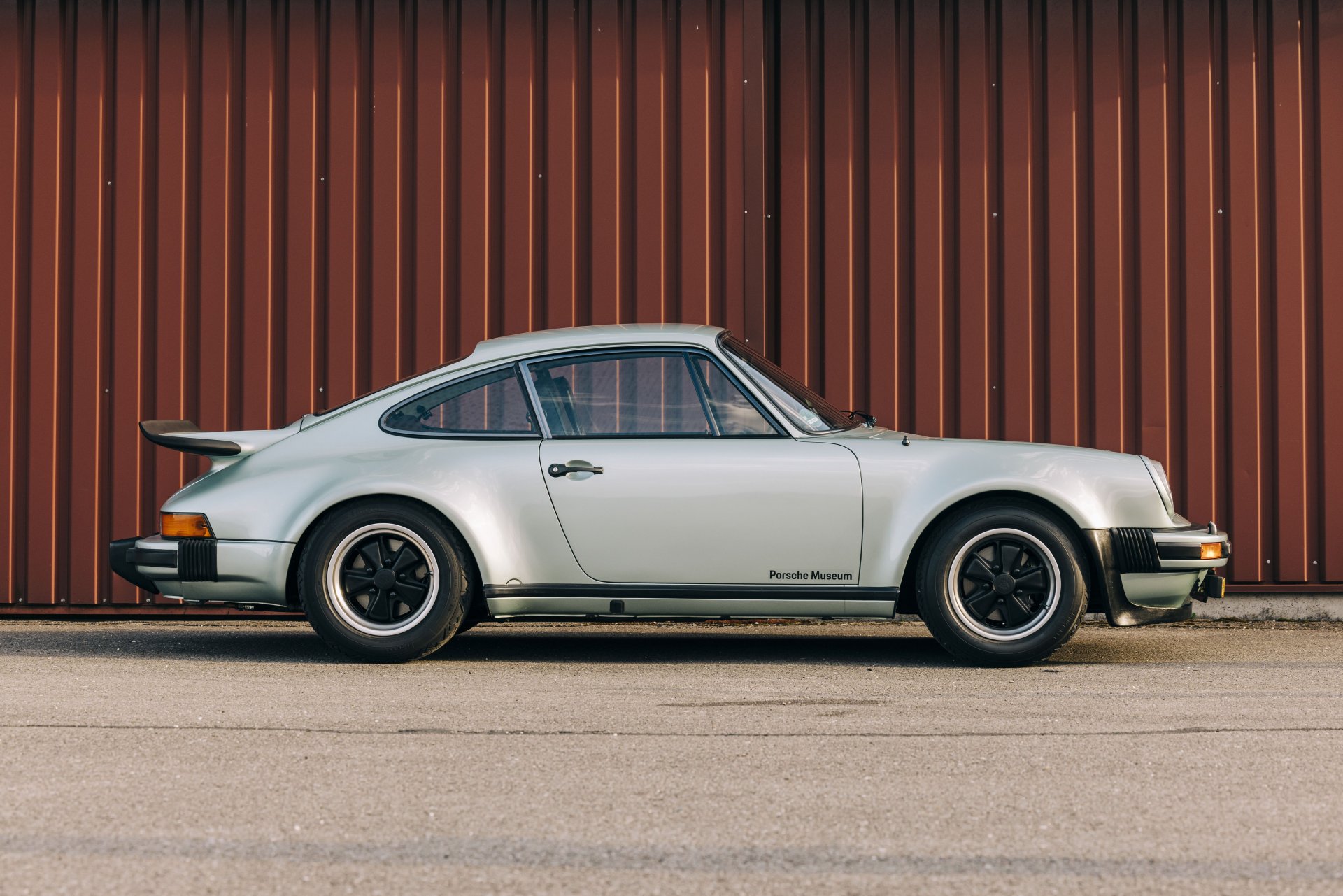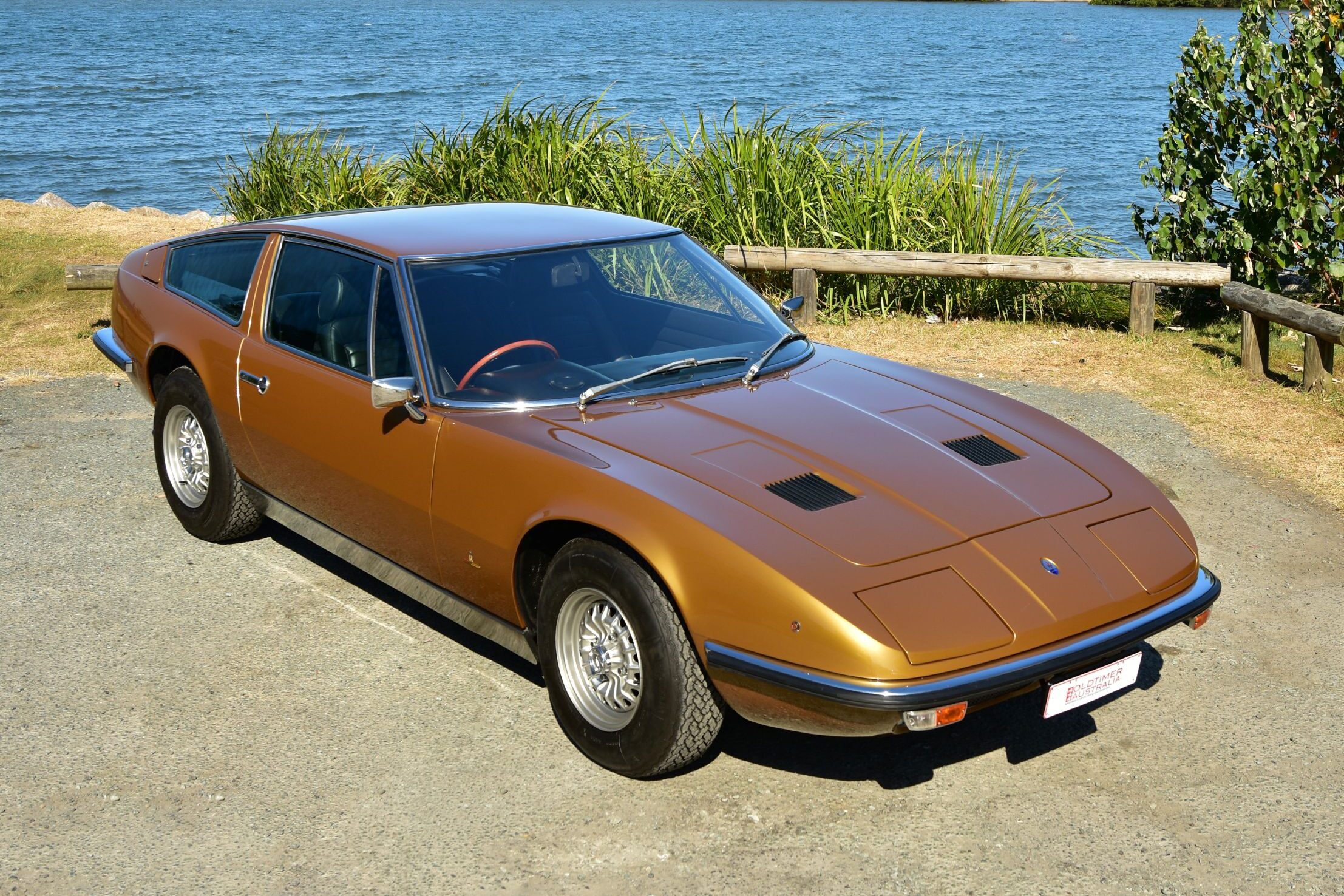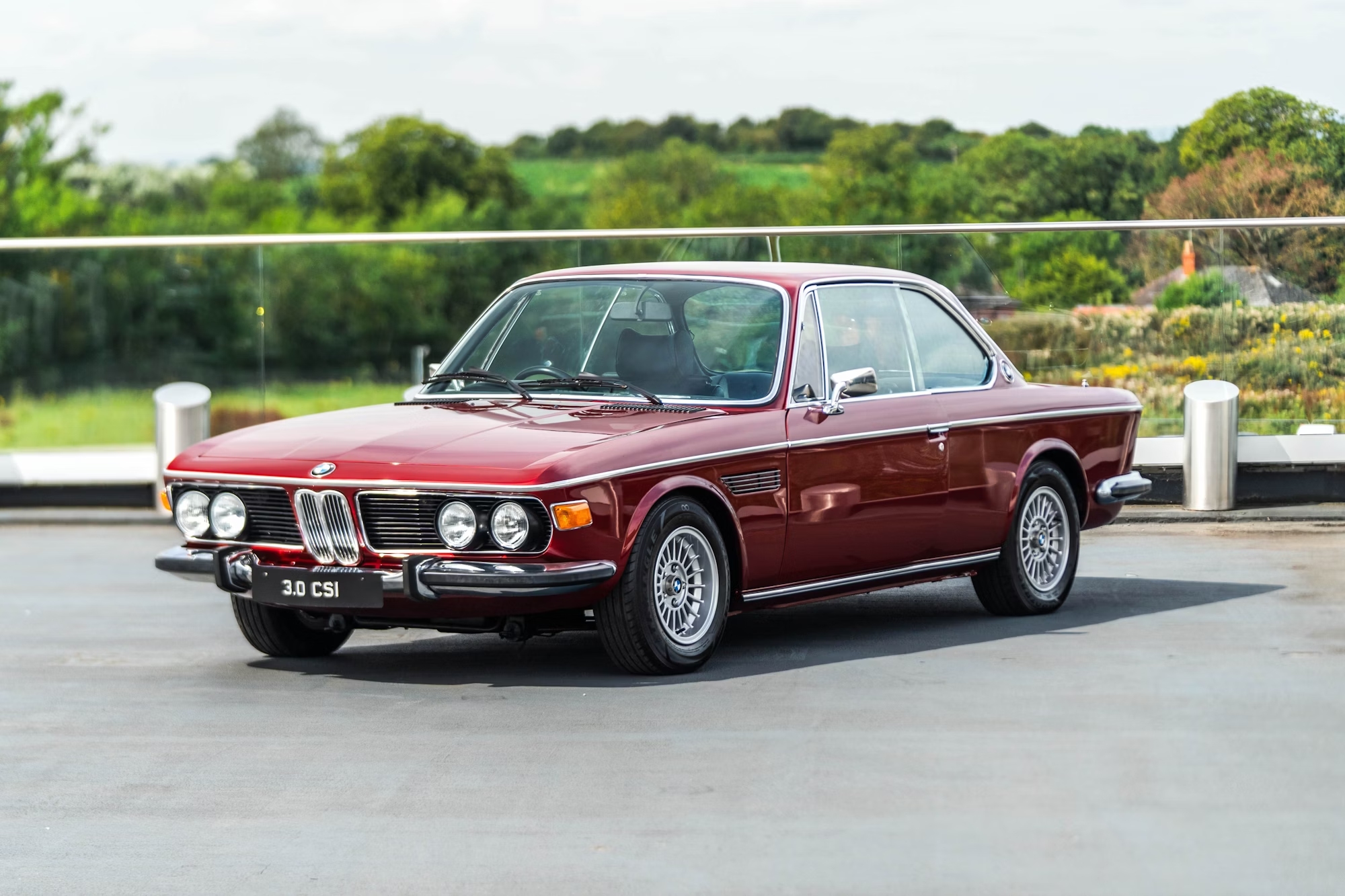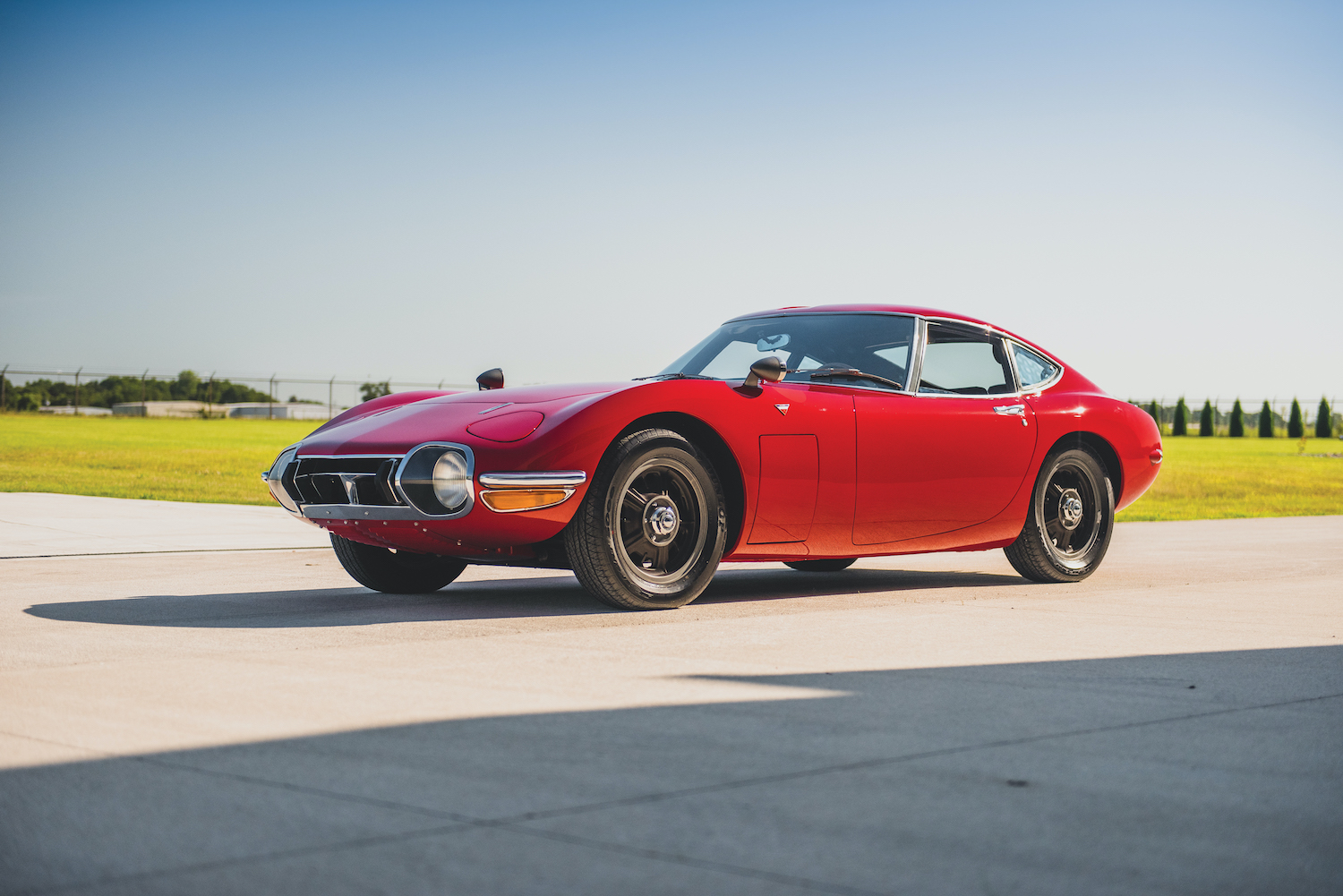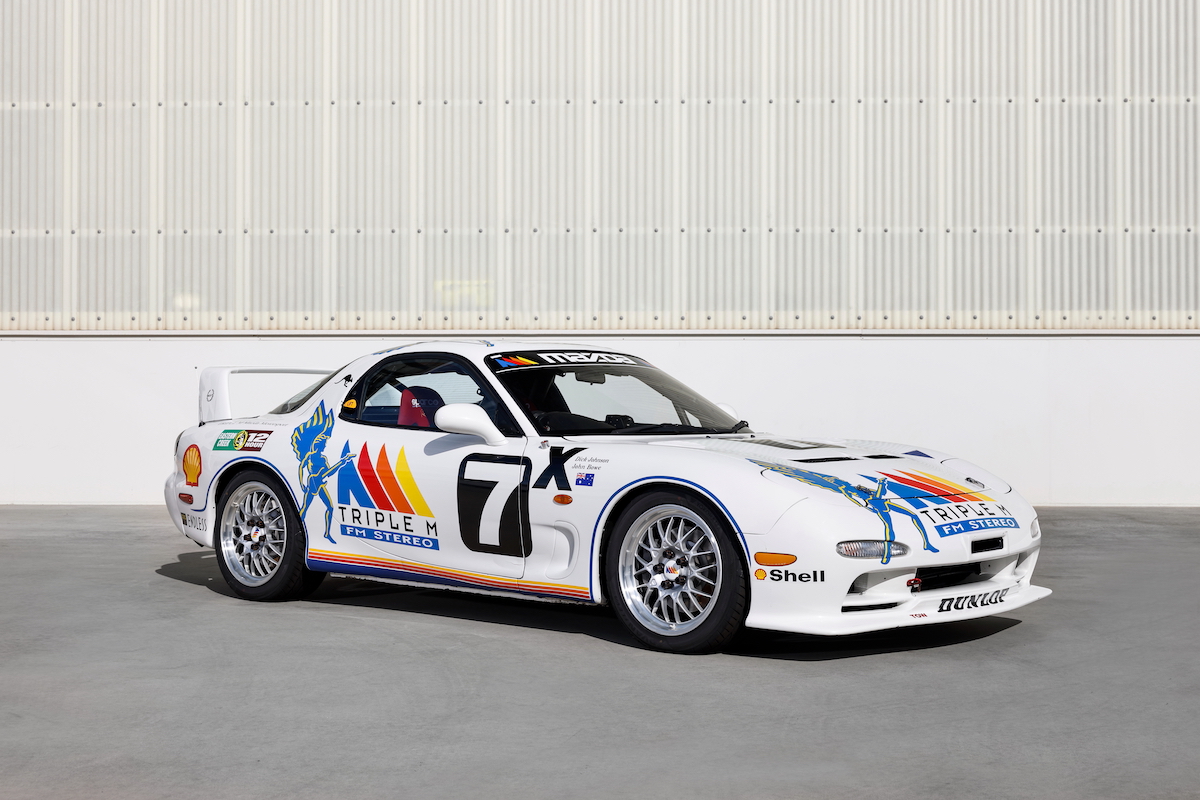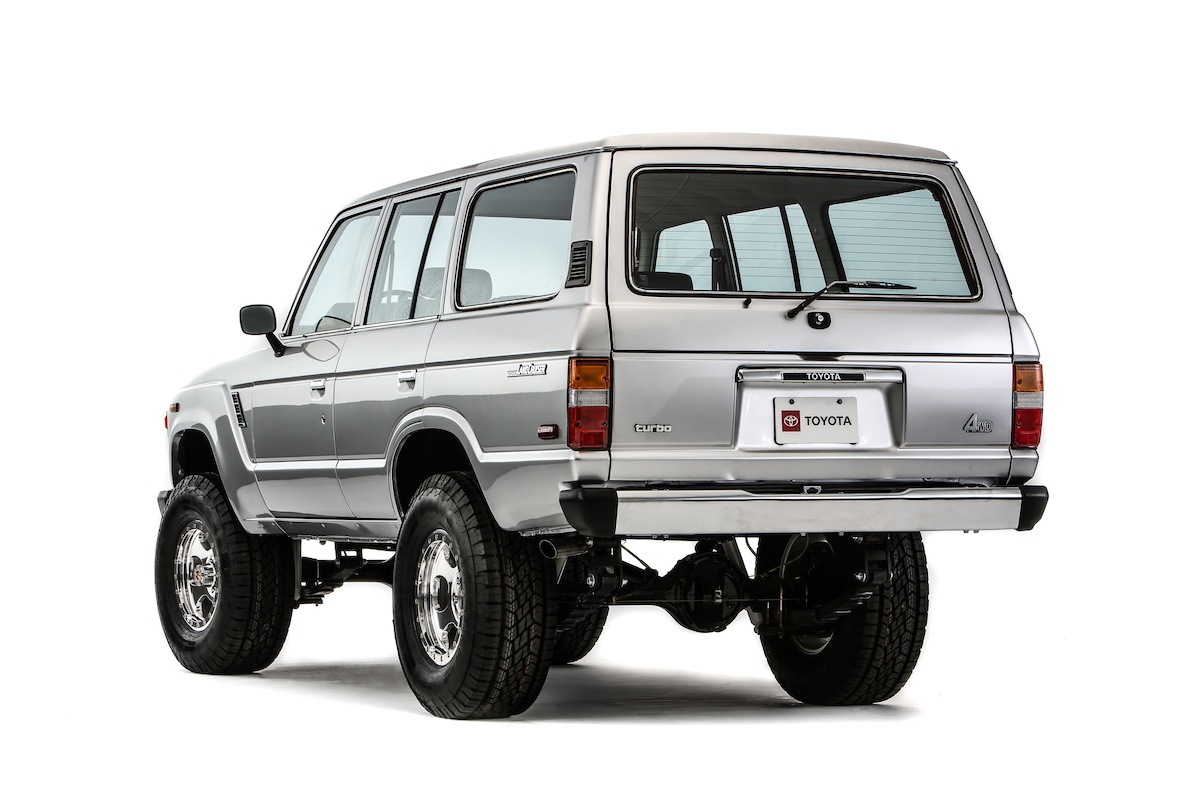Few cars created more controversy when new or have remained more evocative in their later years than the Nissan known as ‘Godzilla’.
Nissan had been building GT-R versions of the six-cylinder Skyline since the 1960s, after acquiring the name in a takeover of the Prince Motor Company.
The first GT-R appeared in 1969 as a 2.0-litre, DOHC six-cylinder sedan. Two years later a two-door designated KPGC-10 was added; the first in a sequence of production-based Nissan coupes that would transform the Japanese market.
Nissan’s R32 GT-R was not the first turbocharged two-door to combine all-wheel drive and staggering performance. Audi almost a decade earlier had pioneered these attributes in its Ur-Quattro, spawning a new era of World Rally Championship ferocity.
The car that appeared in 1989 as part of the 8th Generation ‘R32’ Skyline range arrived fully formed and ready to deliver performance at confronting levels.
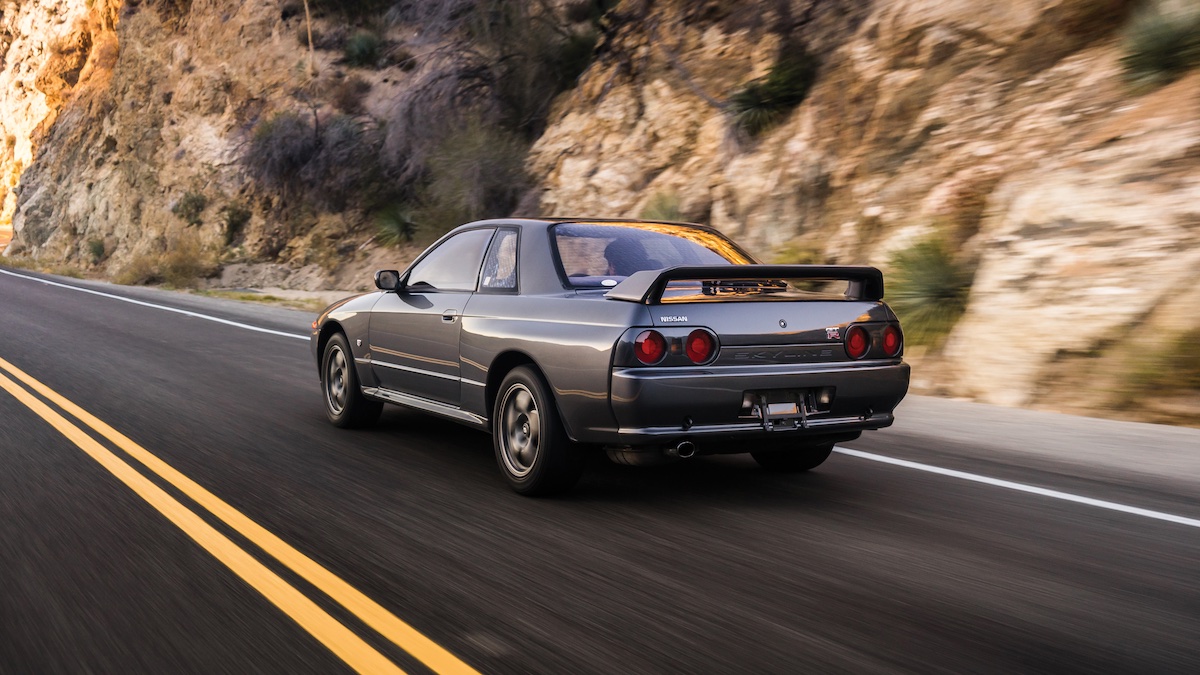
The GT-R was never seriously contemplated as a rally car, but its designers clearly harboured intentions of tarmac-based motorsport glory.
At the heart of the new car was Nissan’s 2.6-litre, inline six-cylinder engine with sequential turbochargers and intercooler, hitched to a clever variable torque-split transmission. Engine output was an officially sanctioned 206kW, but more realistically in the 260-270kW range with plenty more available.
For the first time in its 20-year history there was no rear-wheel drive GT-R in the Skyline range. R32 versions introduced a sophisticated all-wheel drive system that directed power principally to the rear wheels until their grip limits were reached, then channelled drive forward to give ‘Godzilla’ its limpet-like grip.
For even more assured grip under varied road conditions Nissan added its pithily-named ATTESA E-TS – Advanced Total Traction Engineering System for All-terrain with Electronic Torque Split – AWD system which could alter the front-to-rear ratio several times per second. The concept wasn’t new or Nissan’s own design, having originally been developed by Porsche in the mid-to-late 1980s for its planned 911-based Group B rally challenger, the 959.
Like the 959, which went on to claim victory in the 1986 Paris-Dakar rally, the R32 GT-R quickly notched up some impressive motorsport victories. The Nissan coupe won at its first race outing in March 1990; a 300-kilometre event which opened the 1990 All Japan Touring Car Championship. Three months later, Australia saw the future (briefly) of local Touring Car competition when Gibson Motor Sport fielded two GT-Rs driven by Mark Skaife and Jim Richards.
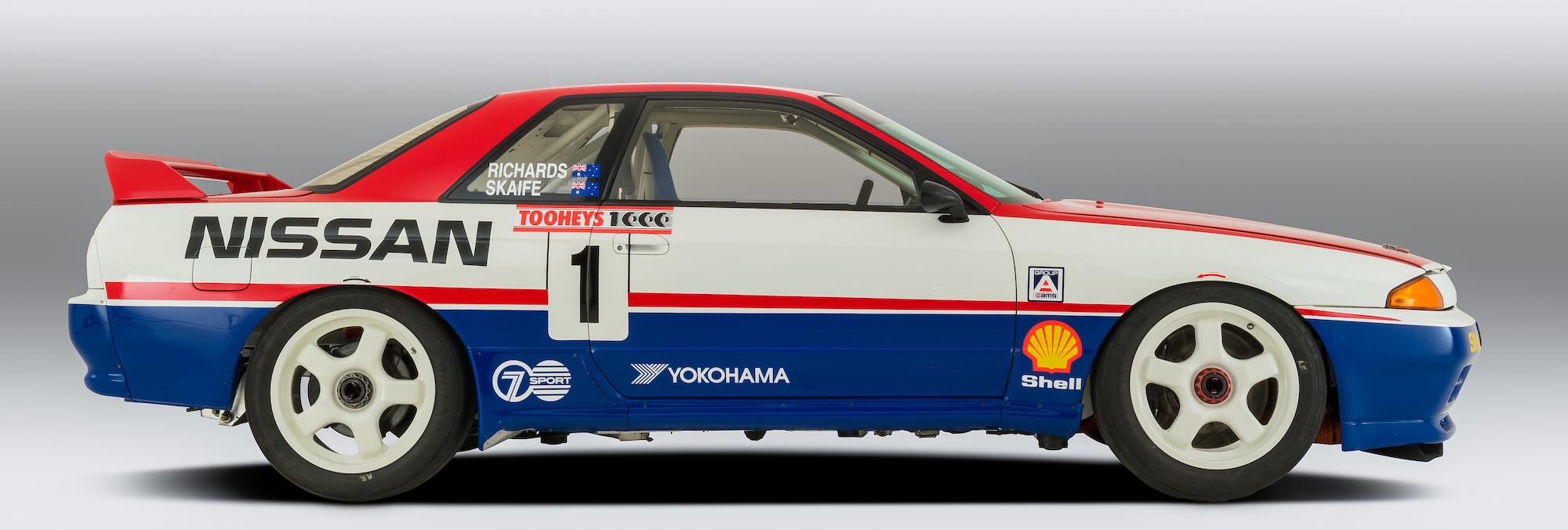
Development teething troubles saw these Australian-fettled GT-R’s DNF more often than they won during 1990, but on their trouble-free days the cars nicknamed ‘Godzilla’ by Australia’s Wheels magazine were uncatchable.
Richards won the Australian Touring Car Championship in 1991 and his teammate Mark Skaife followed suit in 1992. The pair went on to record back-to-back Bathurst 1000 wins in 1991 and 1992, cementing a period of dominance for the turbocharged all-wheel drive R32 that eventually led to its disqualification.
Aussie race promoters and the fiercely tribal Ford-Holden supporter base that followed the ATCC at the time didn’t want high-tech, all-wheel drive cars dominating their favoured V8 Falcons and Commodores, and the Nissan’s were sent packing.
Sadly, for Nissan Australia the car-buying public also voted with its wallet when considering a GT-R for road use. The company imported 100 Australian-complied cars during 1991, offering the road going version of the race-winning weapon for what seemed a heady price tag (at least for a Nissan) of $110,000.
Hindsight is a wonderful thing but, given the GT-R’s $55,000 price advantage over the cheapest Porsche 911, which offered comparable performance, those 1991 R32 Skylines now look to be a screaming bargain.
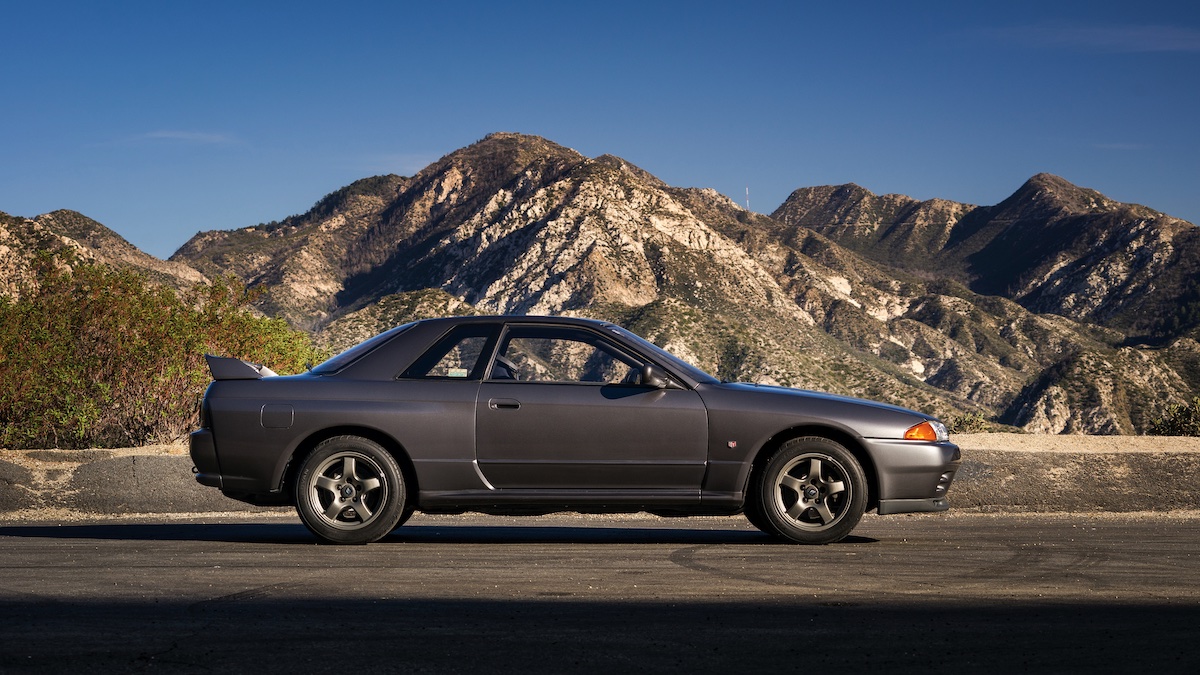
Once landed in Melbourne an extra 50 hours were allocated per car for installation of compliance items including door intrusion bars, child-seat restraints, the fuel-filler restrictor, high-mount stop-light and replacement 260km/h speedometer. Of the 100 ‘official’ imports, 26 were Black Pearl Metallic with a further 37 of each in Jet Silver and Red Pearl Metallic.
The legendary media tycoon and car enthusiast Kerry Packer was so enthralled by the GT-R that he purchased two of them, keeping the Nissan’s for many years in a parking garage opposite his Park Street HQ in Sydney.
In a 1993 article entitled “Farewell To Godzilla” which marked the end of the GT-R’s race career in Australia and tracked its disappointing sales performance, Wheels magazine reported that just 63 of the available 100 cars had found owners.
There are three distinct markets in Australia for the R32 GT-R. At the bottom of the pile sit base-model JDM import cars. These will typically have arrived since the late 1990s and have travelled significant distance. Given that more than 43,000 R32 GT-Rs were built between 1989 and 1994, supply from Japan is plentiful and ongoing.
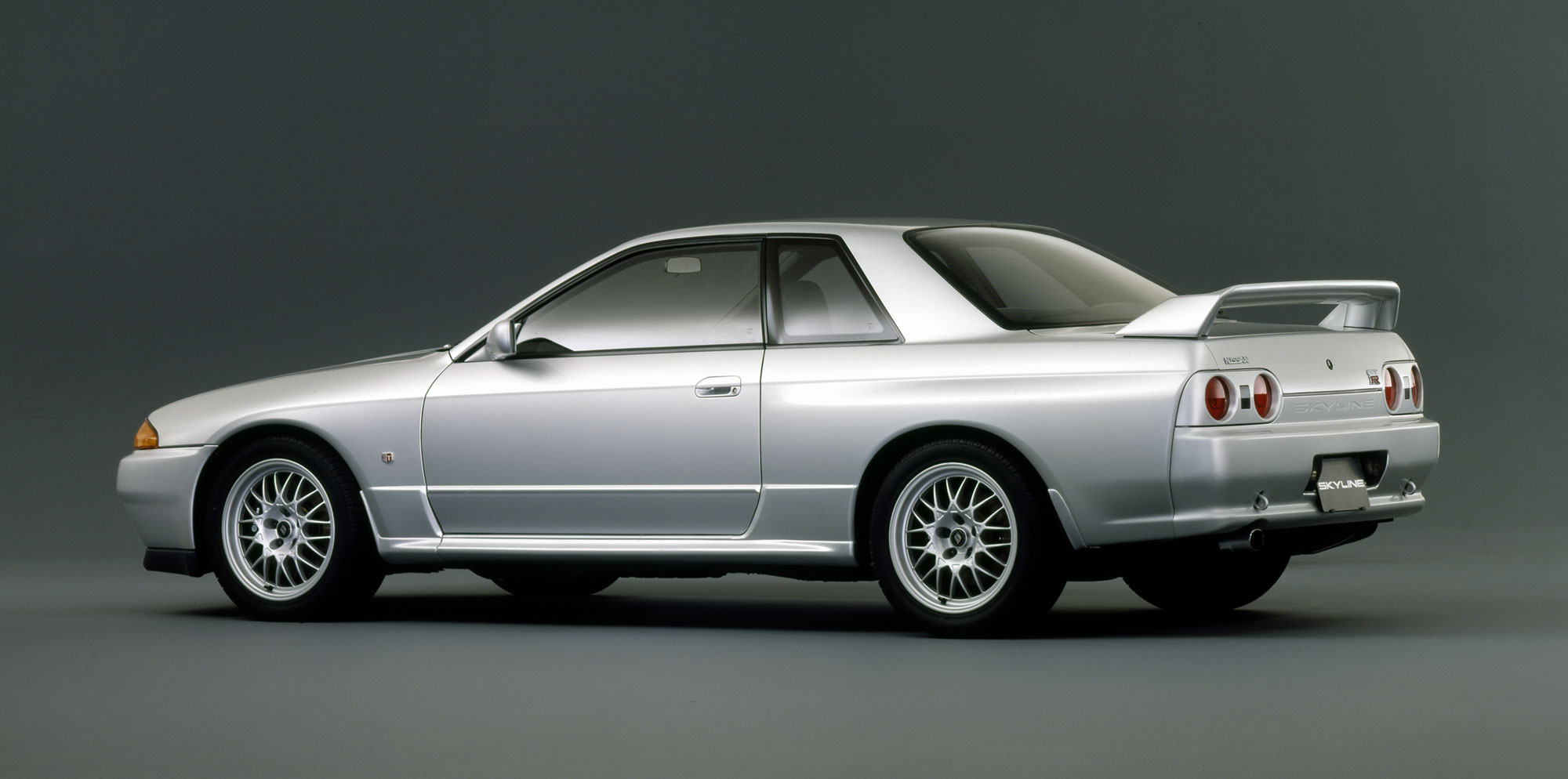
Above the basic models sit the limited-edition, homologation-focused ‘V-Spec’ imports, produced in two editions totalling 2756 cars, plus Nismo and N1 versions. These between them represent a combined 788 cars and they currently bring the highest prices.
However, the least common and potentially most collectible are those initially unwanted 100 cars that were converted to Australian specification. No recent sales have been recorded, but a documented two-owner car with only 27,000km on the clock was advertised by a prominent dealer during 2025 at $185,000.
When identifying an Australian-delivery GT-R, look for a Nissan Australia compliance plate and the Vehicle Code “40ZKBNR32RX”.
Typical 150,000km R32s sell in the $65,000 to $80,000 range before excellent V-Specs jump to around $100,000 and Nismo versions reach $180,000. Limited-edition V-Specs offered during late 2025 at Japanese auctions were realising ¥6.5-9.2 million (around A$56-95,000) so cars already landed and complied will be less expensive than new arrivals.
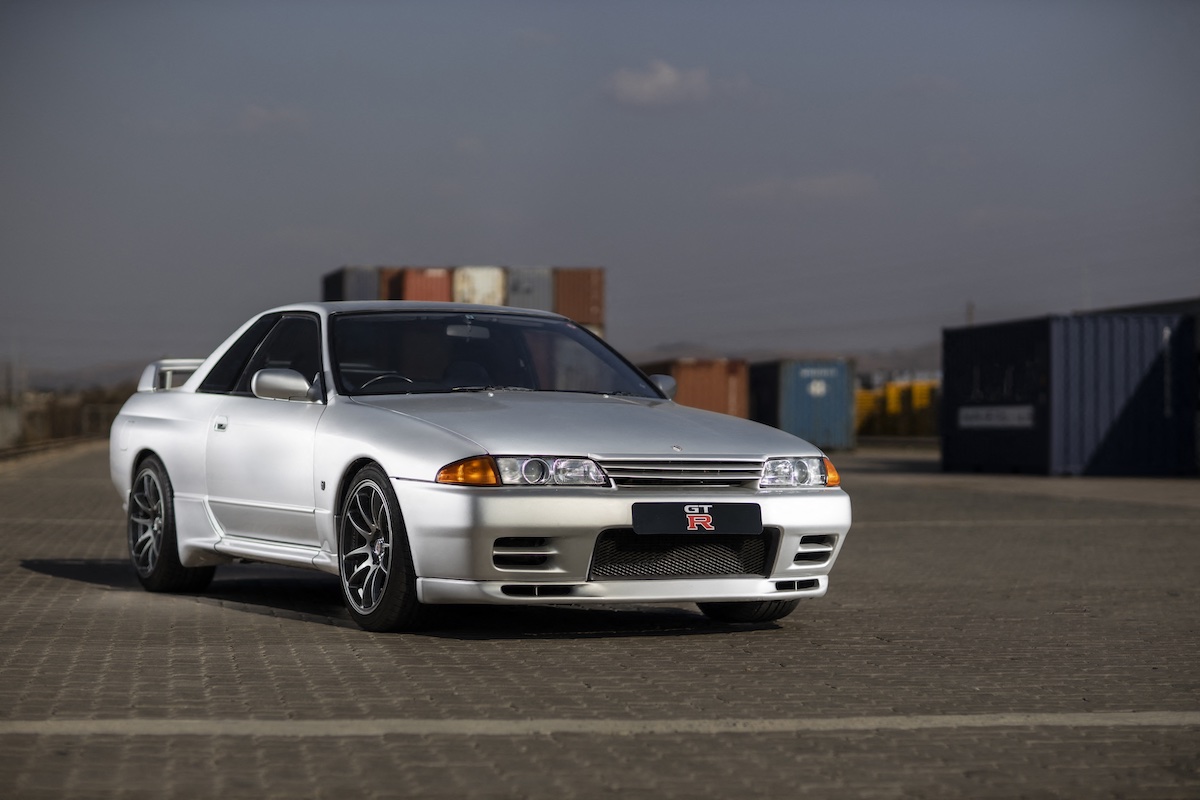
Things To Watch Out For When Buying a Used Nissan Skyline R32 GT-R (1989-94)
- Body rust and paint delamination on horizontal surfaces.
- Water leaks through rear wing mounting holes.
- Coolant and underbonnet oil leaks.
- Exhaust smoke of any kind. White smoke signifies oil being burned by the turbochargers.
- Clutch shudder and transmission noise.
- Tyres fouling inner mudguards due to worn suspension or excessively wide wheels.
- Worn interior trim and cracked plastics from sun exposure.
- Air conditioning delivering cool not cold air with squealing or whining from the compressor and pulley.
- Damage to original rims which are costly to replace.
-
1995$65,000
-
2005$35,000-46.15%
-
2010$48,000+37.14%
-
2015$39,000-18.75%
-
2020$69,000+76.92%
-
2025$95,000+37.68%R32 V-Spec

